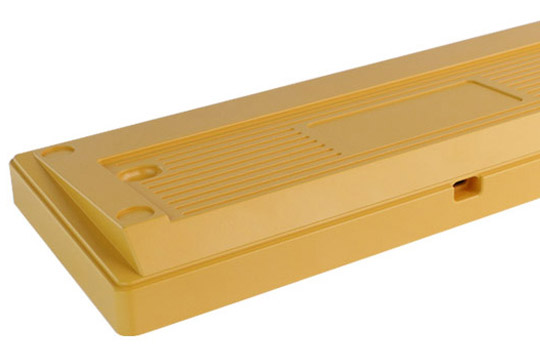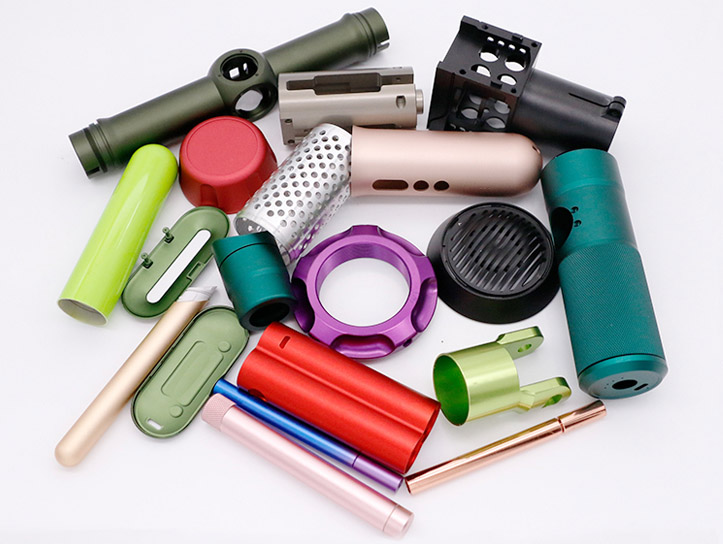VMT’s blogs aim to share our practical experience and knowledge accumulated during the manufacturing and product development process. Our goal is to use these articles to help you improve product design and increase your understanding of CNC machining, 3D printing, rapid prototyping, low-volume manufacturing, and surface treatment technologies. The information we provide is designed to provide actionable guidance and insights for your CNC machining projects.
The Difference Between Galvanizing and Zinc Plating
Chrome plating and zinc plating are two common metal surface treatment technologies. Their common goal is to cover the metal substrate with a protective layer to enhance the wear resistance and corrosion resistance of the workpiece, improve its aesthetics and extend its service life. For those who are new to CNC machining and metal surface treatment, it may be difficult to accurately determine whether a specific product should be chrome-plated or zinc-plated. Sometimes, products that need to be zinc-plated are mistakenly designated as chrome-plated. However, there are some differences between chrome plating and zinc plating in terms of process, performance and use.
Before exploring the differences between chrome plating and zinc plating, it is necessary to have a basic understanding of the electroplating process. Because chrome plating and zinc plating are two widely used forms of electroplating technology.
What is Electroplating?
Electroplating is a process that uses the principle of electrolysis to plate a layer of other metals or alloys on the metal surface. In this process, a specific metal salt solution is used as the electrolyte, and the metal substrate to be plated is used as the cathode of the electrolytic cell. By applying current, the metal cations in the electrolyte gain electrons on the cathode surface, resulting in a reduction reaction and deposition on the substrate, forming a uniform and dense metal coating.

What is Plated Wire?
Chrome plating, also known as electrochromium plating technology, is a process of depositing a layer of chromium metal on a selected metal substrate by electrolysis. Chromium, with its unique silver-white luster and excellent corrosion and wear resistance, is often used as a protective layer. This process not only enhances the durability of the substrate, but also gives the product a more beautiful and lasting appearance.
How does Chrome Plating Work?
The chrome plating process mainly includes the following steps:
Pretreatment: The metal surface to be plated is cleaned, degreased, and rust-removed to ensure that the surface is clean and free of impurities, providing a good base for the subsequent chrome plating process.
Primer: A primer layer, such as copper or nickel, is applied to the pre-treated metal surface to improve the adhesion and corrosion resistance of the chrome layer. This step is not required for all chrome plating processes, but can improve the quality of the coating in some cases.
Chrome plating: The pre-treated metal parts are placed in a chrome plating tank, and a layer of chrome is plated on the metal surface through electrolysis. The chrome plating tank usually contains a mixed solution of chromium-containing compounds, and the chromium ions are deposited on the metal surface to form a coating through an electrochemical reaction.
Post-machining: The chrome-plated metal parts are cleaned, dried, polished, etc. to improve the surface quality and glossiness.
Performance characteristics of chrome plating
High hardness: The chrome plating layer has a very high hardness and can significantly improve the wear resistance of metal parts.
High corrosion resistance: Chromium has stable chemical properties and does not react with most organic acids, sulfides, and alkalis, so the chrome plating layer has good corrosion resistance.
High gloss: The chrome plating layer has a high glossy appearance and a bright silver-white luster and is often used as a decorative part.
Good adhesion and bonding: Through proper pretreatment and base plating process, good adhesion and bonding between the chrome layer and the base metal can be ensured.
What is Galvanizing?
Galvanizing, commonly known as galvanizing, is a process that involves uniformly covering the surface of a metal substrate with a layer of zinc. This zinc coating acts as a barrier that effectively blocks direct contact between the metal substrate and the external environment (such as air, moisture, etc.), thereby protecting the substrate from corrosion and oxidation and extending its service life.
What is the Process of Galvanizing?
The galvanizing process is mainly divided into two categories: hot-dip galvanizing and cold-dip galvanizing:
Hot-dip galvanizing: This is a long-standing galvanizing process. In this process, the metal parts are completely immersed in high-temperature molten zinc liquid. Through the reaction of liquid zinc and the metal surface, a uniform and firmly adhered zinc coating is formed. This method not only ensures the uniformity of the coating thickness, but also gives the coating excellent corrosion resistance and certain wear resistance.
Cold galvanizing: Different from hot-dip galvanizing, cold galvanizing adopts electrolytic technology and is carried out in a specific electrolyte environment. Through the action of electrolytic equipment, zinc ions are reduced to metallic zinc on the metal surface and gradually deposited to form a coating. Although the coating of cold galvanizing is relatively thin, it can still effectively prevent the metal substrate from rusting and provide a certain degree of anti-rust protection.
Performance Characteristics of Galvanized Layer.
Corrosion resistance: Zinc has a relatively active chemical property and can react with oxygen in humid air to form a dense oxide film. This film can effectively isolate the metal substrate from direct contact with the external environment, thereby playing an anti-rust role.
Ductility: The galvanized layer has good ductility and can withstand the deformation of the metal substrate to a certain extent without cracking or falling off.
Aesthetics: The galvanized layer can be passivated, dyed or coated with a light protectant as needed to obtain different colors and glosses to meet different aesthetic requirements.

What is the difference between galvanizing and plating?
-
Process Differences
The main difference between chrome plating and zinc plating lies in the electrolyte and plating conditions used. Chrome plating uses chromate as the electrolyte to form a chromium coating on the metal surface through electrolysis, while zinc plating uses zincate or zinc chloride to cover the metal with a layer of zinc through electrolysis. The two also differ in plating parameters such as current, temperature and time.
-
Performance Comparison
Hardness and wear resistance: Chrome plating is usually harder than zinc plating, so it has better wear resistance and is suitable for occasions that need to withstand friction and wear.
Corrosion resistance: Chrome coatings exhibit greater corrosion resistance in a variety of environments, especially in oxidizing media, while zinc coatings are also effective in preventing rust and general corrosion.
Appearance: The chrome-plated layer has a bright silver-white metallic luster, which is more visually beautiful. The zinc-plated layer is also silver-white, but the glossiness may be slightly lower.
Weldability: The zinc coating can be welded directly due to its good weldability, while the chrome coating may require additional treatment before welding.
-
Application Fields
Due to the difference in performance, chrome plating and zinc plating also have different application fields. Chrome plating is often used in heavy industrial fields such as automobiles, aviation, petrochemicals, and home appliances and electronic products that require beautiful decoration due to its wear resistance and corrosion resistance. Galvanizing is widely used in construction, home appliances, transportation facilities and other fields due to its cost-effectiveness and anti-corrosion performance to provide effective anti-rust protection.
-
Economic and Environmental Considerations
From an economic point of view, the cost of chrome plating is relatively high, which is related to the special electrolyte and high energy consumption. On the other hand, zinc plating is cheaper and more suitable for large-scale production. In terms of environmental protection, zinc plating produces relatively less wastewater and waste gas, and has less impact on the environment. Harmful substances that may be produced during the chrome plating process need to be properly handled to avoid environmental pollution.
In Conclusion
Chrome plating and zinc plating are common surface treatment technologies, each of which has significant differences in process, performance, application, cost and environmental protection. When choosing, it is necessary to ensure the applicability of the technology based on specific needs and usage environments.
VMT provides comprehensive precision machining services from prototype design to CNC machining to surface treatment, focusing on the design of complex geometric structures while ensuring that the products are both beautiful and practical. We are committed to establishing long-term and stable cooperative relationships with our partners through stable quality, on-time delivery and excellent customer service.
Frequently Asked Questions About Galvanizing and Zinc Plating
What Color is Chrome?
The color of chrome plating is usually silvery white, which is determined by the color of the chrome metal itself. However, it should be noted that the color of the chrome plating layer may be affected by many factors, including the thickness of the chrome plating layer, different chrome plating processes, and environmental factors.
Is Chrome Plating Harmful To the Human Body?
The potential harm of chrome plating to the human body mainly depends on the specific environment and contact mode. In industrial environments such as chrome plating factories, long-term inhalation of gases or particles containing hexavalent chromium and other harmful chromium compounds may cause health risks, including carcinogenicity and irritation. In daily life, chrome-plated products such as tableware and faucets are relatively safe in a dry state, but harmful substances may be released during processing and grinding, so be vigilant. When in contact with chrome-plated materials, direct skin contact may cause irritation or allergies, and inhalation of gases or particles is a major health threat. Although ingestion is not common, it also requires attention.
Is Galvanized Stainless Steel?
Galvanizing and stainless steel are two completely different metal treatment methods and materials. Galvanizing involves covering the surface of a metal substrate with a layer of zinc, which is achieved through hot-dip galvanizing or electro-galvanizing processes. This layer of zinc can effectively form an anti-corrosion barrier, preventing oxygen and moisture from directly contacting the metal, thereby slowing down corrosion. As an alloy steel, stainless steel has a unique chromium content that allows it to naturally form a stable chromium oxide layer on the surface, effectively resisting corrosion.



